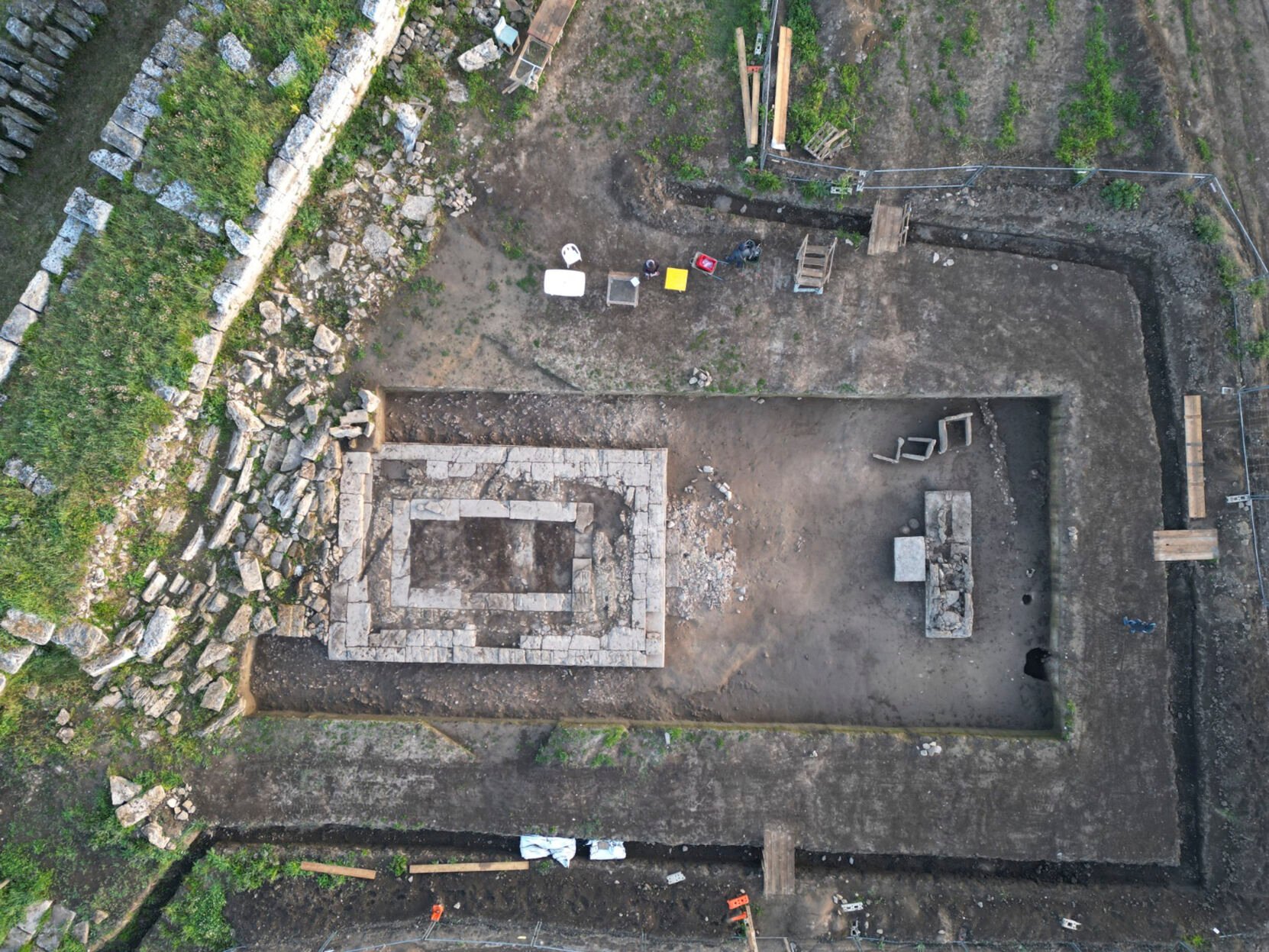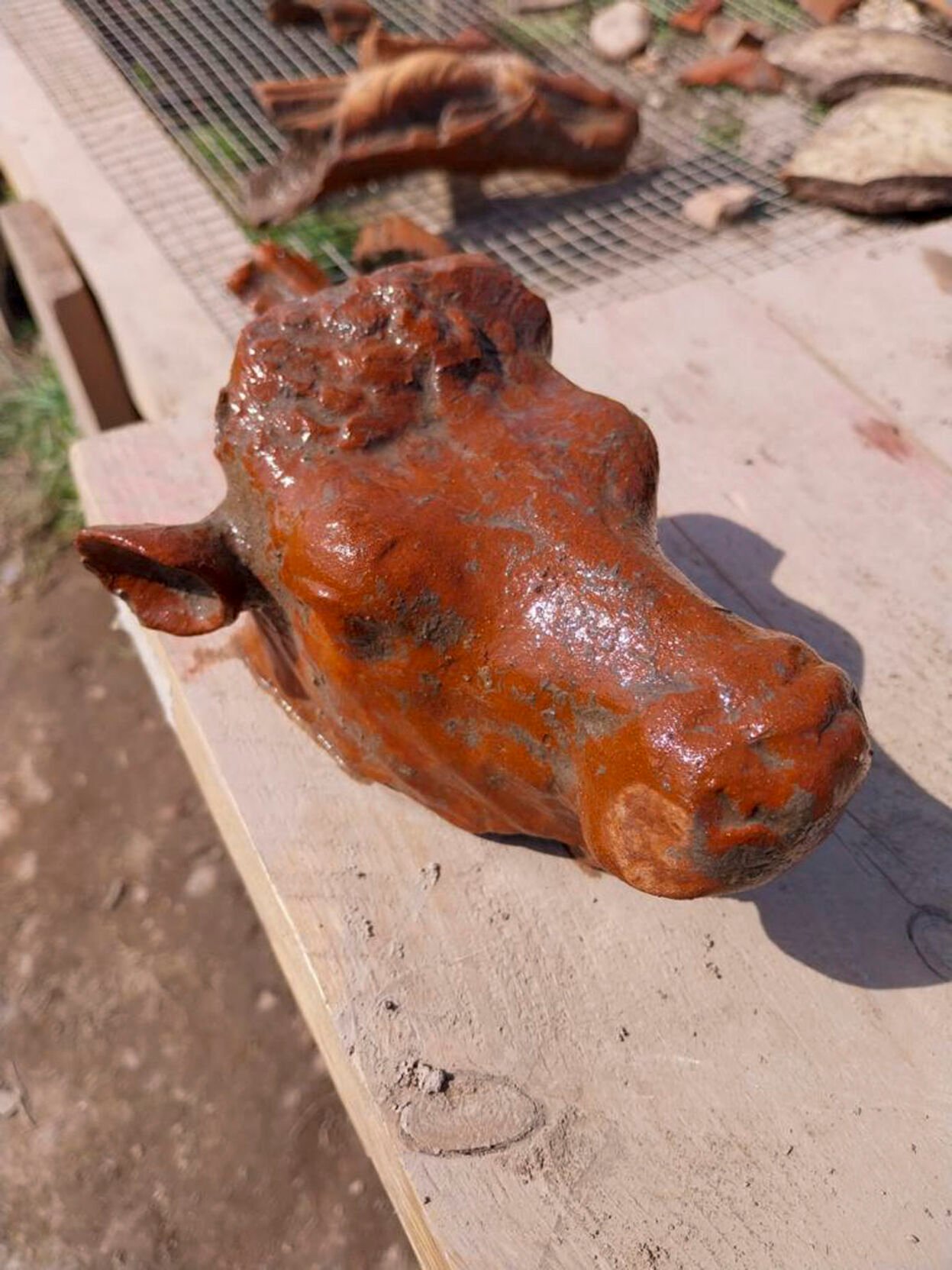Archeologists in Italy unearth ancient dolphin statuette
ROME — Excavations in southern Italy unearthed terracotta bull heads and a figurine of the Greek god Eros riding a dolphin, shining new light on the religious life and rituals of an ancient city, culture ministry officials said.

Paestum Velia Archeological Park
This undated photo shows the area where a newly discovered sanctuary, which dates from the 5th century B.C., was first identified in 2019 along the ancient city walls of Paestum, Southern Italy. The excavations of the sanctuary in the ancient city of Paestum have unearthed seven terracotta bull heads and a figurine of Eros riding a dolphin that shines new light on the religious life and rituals of the ancient Greek city, culture ministry officials said Saturday, April 15, 2023. (Paestum Velia Archeological Park via AP)
It’s the first trove of artifacts identified from a sanctuary in the ancient Greek city of Paestum, which dates from the 5th century B.C. Paestum, famed for its three massive Doric-columned temples, is near the archaeological site of Pompeii but farther down the Almalfi coast.
The small temple was first identified in 2019 along the ancient city walls but excavations were halted due to the COVID-19 pandemic, the Italian Culture Ministry said in a statement Saturday.
Excavations yielded several small terracotta figurines in the first months of resuming work, the Ministry said. Archeologists found seven bull heads around a temple altar, as if placed there on the ground in a form of devotion.
The dolphin statuette found in the first trove of artifacts appears to be from the Avili family of ceramists whose presence was never before documented in Paestum, the statement said.
Limited excavations began at the temples in the 1950s, and the ministry believes more treasures can be found in the area.
Ancient Romans controlled the city by about 275 B.C., renaming it Paestum from the Greek “Poseidonia,” in what was before Magna Graecia.

Paestum Velia Archeological Park
This undated photo shows a terracotta figurine of Eros riding a dolphin found in a newly discovered sanctuary, which dates from the 5th century B.C., that was first identified in 2019 along the ancient city walls of Paestum, Southern Italy. The excavations of the sanctuary in the ancient city of Paestum have unearthed seven terracotta bull heads and a figurine of Eros riding a dolphin that shines new light on the religious life and rituals of the ancient Greek city, culture ministry officials said Saturday, April 15, 2023. (Paestum Velia Archeological Park via AP)

